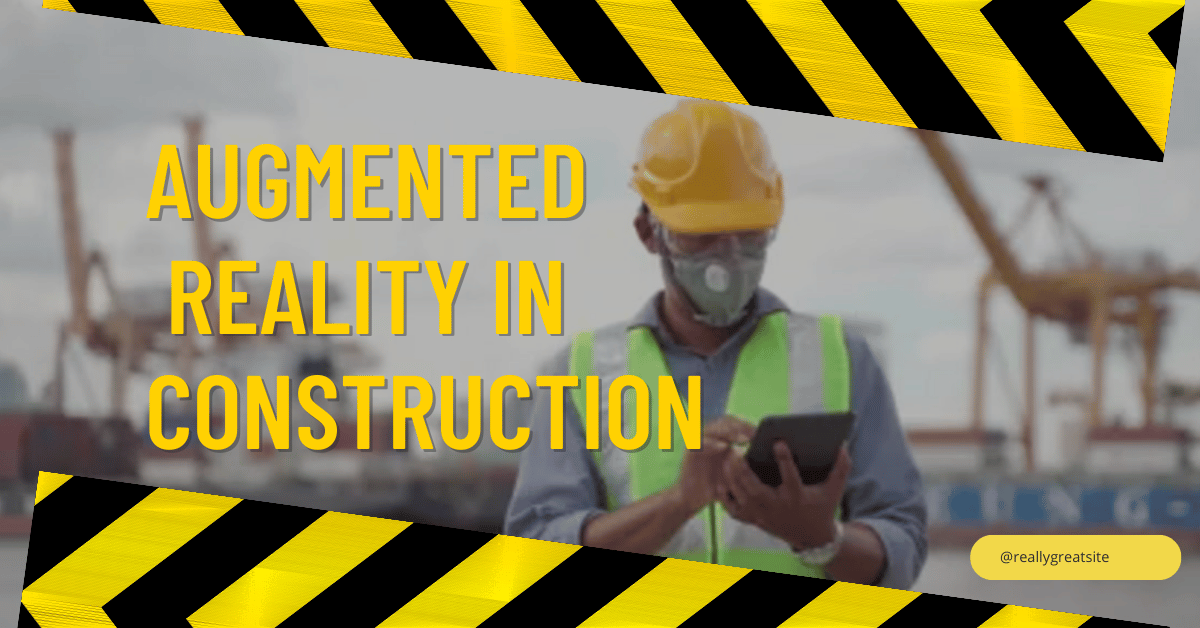The construction industry is undergoing a digital transformation, with innovative technologies playing a pivotal role in enhancing project efficiency and safety. Among these technologies, augmented reality (AR) stands out as a game-changer. AR overlays digital information onto the physical world, allowing construction professionals to visualize, interact with, and manage project data in real-time. This comprehensive guide explores the role of augmented reality in the construction industry, highlighting its benefits, applications, challenges, and future trends.
Understanding Augmented Reality (AR)
Augmented reality (AR) integrates digital content with the physical environment, enhancing real-world experiences with computer-generated elements. Unlike virtual reality (VR), which creates a fully immersive digital environment, AR overlays digital information onto the physical world, providing a blended view. This technology utilizes devices such as smartphones, tablets, and AR glasses to project digital elements onto the user’s field of vision, allowing for interactive and context-aware experiences.
Benefits of Augmented Reality in Construction
AR offers numerous benefits to the construction industry, transforming how projects are designed, executed, and managed. Key advantages include:
- Enhanced Efficiency: AR streamlines various construction processes, reducing time and resource wastage.
- Improved Safety: AR aids in identifying potential hazards and provides safety training, minimizing accidents on site.
- Cost Savings: By improving accuracy and reducing errors, AR helps in cutting down costs associated with rework and delays.
- Better Collaboration: AR facilitates real-time communication and collaboration among team members, both on-site and remotely.
These benefits collectively contribute to more efficient, safe, and cost-effective construction projects.
Applications of AR in Construction
AR technology finds diverse applications in the construction industry, enhancing various stages of the project lifecycle:
- Project Planning: AR assists in visualizing project designs, enabling stakeholders to explore and modify plans before construction begins.
- Site Inspections: AR enables real-time site inspections, allowing inspectors to overlay blueprints and identify discrepancies or potential issues.
- Training: AR provides immersive training experiences for workers, improving their skills and ensuring they are well-prepared for their tasks.
By integrating AR into these applications, construction companies can significantly improve project outcomes.
AR in Project Design and Visualization
AR revolutionizes project design and visualization by providing a 3D representation of architectural plans. Designers and clients can visualize the final structure in its intended environment, making it easier to identify design flaws and make necessary adjustments. This capability enhances design accuracy and ensures that the project meets the client’s expectations.
Enhancing Collaboration with AR
Collaboration is crucial in construction, and AR facilitates seamless communication among team members. With AR, project managers, architects, and engineers can share real-time data and updates, ensuring everyone is on the same page. This real-time collaboration reduces misunderstandings and ensures that all stakeholders have a clear understanding of the project’s progress and requirements.
Improving Safety with AR
Safety is a paramount concern in the construction industry. AR significantly enhances safety by:
- Hazard Identification: AR can overlay hazard information onto the physical environment, alerting workers to potential dangers.
- Safety Training: AR provides immersive safety training simulations, preparing workers for real-world scenarios and reducing the likelihood of accidents.
These applications of AR contribute to a safer working environment and help in minimizing workplace incidents.
Streamlining Construction Processes with AR
AR streamlines various construction processes by providing real-time data and visual guidance. Workers can use AR to access instructions, view 3D models, and receive real-time feedback, ensuring that tasks are performed correctly and efficiently. This real-time guidance reduces errors and accelerates the construction timeline.
AR in Quality Control and Assurance
Quality control is critical in construction, and AR enhances this aspect by ensuring precision and identifying defects early. AR allows inspectors to compare the constructed elements with digital models, detecting any deviations or errors. This early detection prevents costly rework and ensures that the project meets the required standards.
Training and Skill Development Using AR
AR is a powerful tool for training and skill development in the construction industry. It provides immersive training experiences that simulate real-world scenarios, helping workers develop the necessary skills in a controlled environment. This hands-on training approach enhances learning outcomes and prepares workers for the complexities of construction tasks.
Cost Implications of Implementing AR
While the initial investment in AR technology can be significant, the long-term benefits often outweigh the costs. AR improves efficiency, reduces errors, and enhances safety, leading to substantial cost savings over time. Conducting a cost-benefit analysis can help construction companies determine the return on investment (ROI) and justify the adoption of AR technology.
Challenges in Adopting AR in Construction
Despite its benefits, adopting AR in the construction industry comes with challenges:
- Technological Barriers: Integrating AR technology with existing systems can be complex and require significant technical expertise.
- Workforce Adaptation: Training workers to use AR technology effectively can be time-consuming and may face resistance from those accustomed to traditional methods.
- Cost: The initial investment in AR hardware and software can be high, making it a barrier for smaller construction firms.
Addressing these challenges requires a strategic approach and a commitment to embracing innovation.
Case Studies of AR in Construction Projects
Real-world examples illustrate the successful implementation of AR in construction:
- Case Study 1: A large construction firm used AR for project planning and design visualization, resulting in a 30% reduction in design errors and a 20% decrease in project timeline.
- Case Study 2: An infrastructure project leveraged AR for site inspections and safety training, improving safety compliance by 40% and reducing workplace accidents.
These case studies demonstrate the tangible benefits of AR in construction projects.
Future Trends of AR in the Construction Industry
The future of AR in construction looks promising, with several trends set to shape its adoption:
- Integration with BIM: Combining AR with Building Information Modeling (BIM) will provide even more detailed and interactive project data.
- Advanced AR Devices: The development of more advanced and affordable AR devices will make the technology accessible to more construction firms.
- AI-Powered AR: The integration of artificial intelligence (AI) with AR will enable smarter and more predictive applications, enhancing decision-making and efficiency.
Staying abreast of these trends will help construction companies leverage AR to its full potential.
Conclusion
Augmented reality is revolutionizing the construction industry by enhancing project design, improving safety, streamlining processes, and fostering better collaboration. While the adoption of AR presents challenges, the long-term benefits make it a worthwhile investment. By embracing AR technology, construction firms can achieve greater efficiency, reduce costs, and ensure higher safety standards. As AR technology continues to evolve, its role in the construction industry is set to expand, driving innovation and improving project outcomes.

